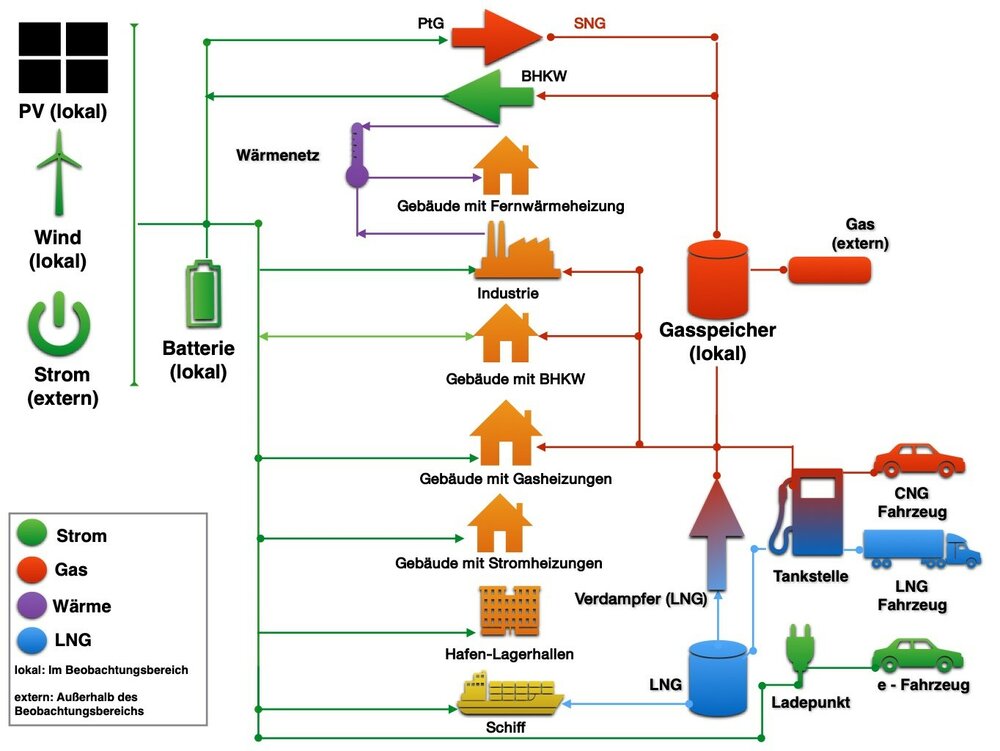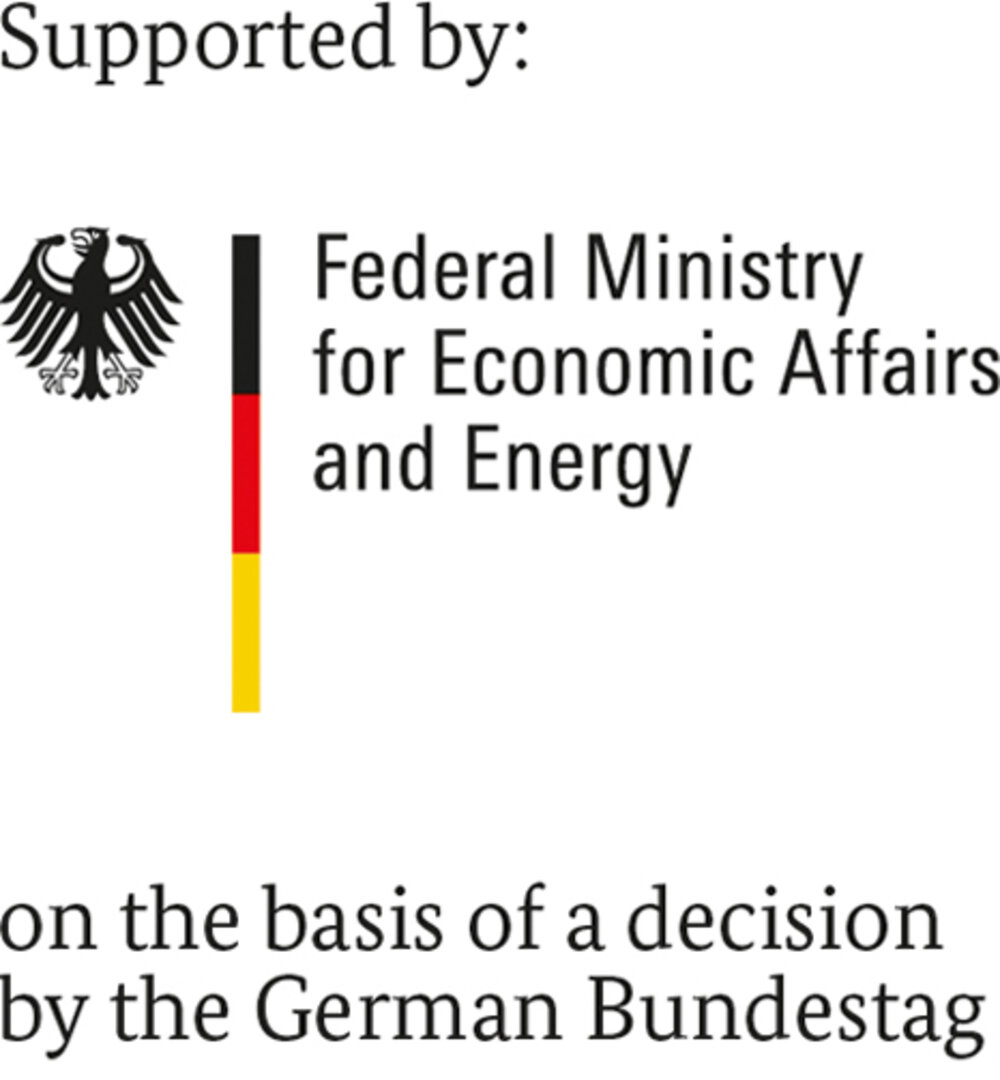MethGrid: Neighborhood networks for heat, electricity and gas.
Focusing on just a few technologies is not enough to ensure success in the energy revolution. Likewise, it makes little sense to develop individual sectors, energy forms and distribution levels or power cells within the system in isolation from each other. In many cases existing energy resources will only be optimized quickly and efficiently if linkage of the three major sectors – electricity, heat and transport – is tackled now and adequately reflects current infrastructure. The MethGrid group is doing just that by investigating the concept of a practically manageable neighborhood-level energy system sub-unit: the microgrid. The inland port facility in Karlsruhe is seen as representative of the concept because it provides a version of the energy system in miniature. Constituent elements that are not yet in place on site but are nevertheless essential for the energy revolution are taken into account in the simulation process. The result is a complete three-sector system that covers not only infrastructure components (i.e. electricity, gas and thermal power grid) but also energy converters (e.g. wind turbines, solar cells, power-to-gas plants and heat exchangers) and consumers (trade and industry, households, road transport, municipal buses and waterborne vessels).
RE-methane plays a vital role as a coupling element linking the electricity, heat and transport sectors. Gas generated from renewable electricity in the PtG process or from biomass can be stored and compressed (C-RE-methane) or liquefied (L-RE-methane) depending on the target application. In the first case, a fleet of gas-fueled public transport buses is being used to test supply scenarios. Possibilities for reconversion into electricity following seasonal storage, for example, are also being investigated. In the second case, the project includes development of a liquefied renewable gas (LRG) hub as a storage and distribution point for liquefied RE-methane for use in shipping, for peakshaving and as truck fuel.
Simulations created as part of MethGrid’s work are closely linked with technological developments produced in the MethFuel, MethCar, MethPower and MethMare projects. These four groups supply key data to MethGrid so that simulations can be conducted in a practice-oriented context. Additionally, feedback of the results and requirements identified ensures that the technologies under investigation in the other groups can be prepared and optimized to facilitate coupling of the sectors.
Design and development of a microgrid
Initially, the partners in MethGrid conceive various approaches for microgrids, e.g. autarchic or in synergy with other power cells and networks. In the next step, these approaches are created in ‘Modelica’ before being dynamically simulated on the basis of different scenarios and under consideration of relevant regulatory factors and conditions applying in the energy industry. Simulations focus on optimizations based on cost, CO2 emissions, flexibilization and system stability. The microgrid simulations aim to create, for the first time, a concept for the practical implementation of a complete inter-sector cellular energy system based on a port facility. The results will facilitate direct and unrestricted analysis and optimization of the mutual influences and dependencies that operate between the different components of the energy system.
To prepare for actual practical implementation, MethGrid partners are also developing an automation and control concept for microgrid operation. Here, it should be emphasized that the modeling process is based on actual data from the port facility and components involved, and it is just this close proximity to reality that ensures a practicable implementation concept can ultimately be developed. The results will be formulated so they can be applied to other port and harbor locations as well as concepts for localities hosting high levels of trade and industry.
Integration of innovative technology concepts in the port grid
MethGrid’s activities also cover the evaluation and integration of new technologies, concepts and technology combinations. One example here is the innovative methane engine concept being investigated in the MethPower group. The concept facilitates virtually direct use of exhaust flows from CHP plants as inputs for synthesis in PtG plants whilst using the electrolysis oxygen as an oxidation agent. Coupling simulations for both systems (CHP concepts from MethPower and PtG concepts from MethFuel) are being conducted in MethGrid in an approach that identifies synergies that would not be apparent if the concepts were considered separately. These simulations will highlight a range of interconnection and operation options for achieving cost-effective and energy-efficient operation and for increasing flexibility and efficiency.
A further example of MethGrid’s work on flexibilization, seasonal storage and inter-sector coupling is the development of concepts for a multifunctional LRG hub (liquefied renewable gas). This component in particular involves coupling similar to regional and interregional grids and illustrates the importance of considering the energy system. Elements covered include peak load coverage in the Baden-Wuerttemberg gas transportation system, storage for interregional LRG supply (trucks, shipping and gas applications not linked to pipelines in the Black Forest) as well as a collection system for LRG in the region. Linking the various possibilities for using an LRG hub is an innovative approach because conventional (fossil) LNG hubs primarily function as intermediate storage facilities for globally traded LNG. MethGrid’s investigations open up innovative possibilities for use that contribute significantly to the introduction of LNG and LRG in Germany.

